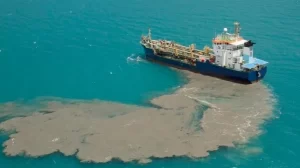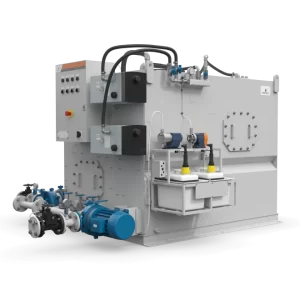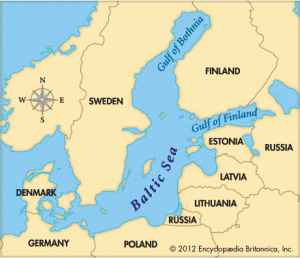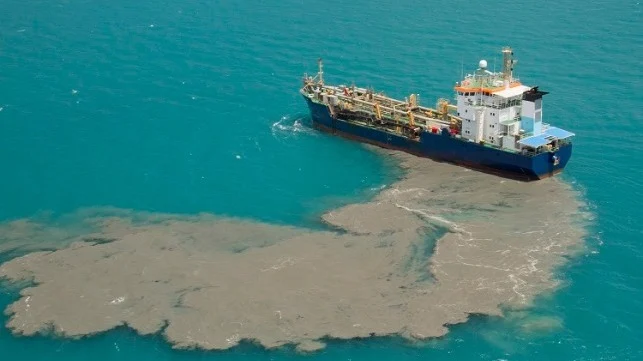The International Convention for the Prevention of Pollution from Ships, MARPOL, is a key international marine environmental convention aimed at minimizing pollution of the oceans and seas from ships. This includes pollution from oil, chemicals, garbage, sewage, and air emissions. The MARPOL Convention has evolved through various amendments to address emerging environmental challenges and now consists of several annexes, each targeting different types of pollution.
MARPOL Annex IV regulates the discharge of sewage from ships to prevent marine pollution. It applies to ships of 400 gross tonnage and above, or those carrying more than 15 passengers. The annex prohibits the discharge of untreated sewage within 12 nautical miles from the nearest land, unless the ship uses an approved sewage treatment plant that meets specific effluent standards. In special areas, stricter rules apply, and discharge is only allowed if the sewage is treated to meet the required standards. Ships must also be equipped with either a holding tank for sewage storage and delivery to port reception facilities or a treatment system. Compliance ensures the protection of marine ecosystems and human health.

Sewage – the problem
On ships, sewage primarily refers to black water, which includes waste from toilets, urinals, and medical sinks. This type of wastewater contains high levels of pathogens and is strictly regulated under MARPOL Annex IV. Grey water, on the other hand, comes from showers, sinks, laundry, and galley drains. While grey water is not officially defined as “sewage” under MARPOL Annex IV, it can still contribute to marine pollution. Therefore, only black water is considered sewage under the MARPOL Convention, and its discharge is controlled to protect the marine environment.
The discharge of raw sewage into the sea can create a health hazard. Sewage can also lead to oxygen depletion and can be an obvious visual pollution in coastal areas – a major problem for countries with tourist industries. The main sources of human-produced sewage are land-based – such as municipal sewers or treatment plants. However, the discharge of sewage into the sea from ships also contributes to marine pollution.
Annex IV of MARPOL
Annex IV contains a set of regulations regarding the discharge of sewage into the sea from ships, including regulations regarding the ships’ equipment and systems for the control of sewage discharge, the provision of port reception facilities for sewage, and requirements for survey and certification. It is generally considered that on the high seas, the oceans are capable of assimilating and dealing with raw sewage through natural bacterial action. Therefore, the regulations in Annex IV of MARPOL prohibit the discharge of sewage into the sea within a specified distance from the nearest land, unless otherwise provided. Governments are required to ensure the provision of adequate reception facilities at ports and terminals for the reception of sewage, without causing delay to ships.
–
Summary of Sewage Solutions for Ships (MARPOL Annex IV):
1- Holding Tank and Delivery to Port:
-
- Store sewage in a holding tank.
- Discharge sewage to port reception facilities.
2- Sewage Treatment Plant (STP) – Approved Systems and Discharge Standards
Modern ships that operate beyond near-coastal waters are typically fitted with approved sewage treatment plants (STPs). These systems are designed to biologically and/or chemically treat sewage generated onboard to reduce pollution before it is discharged into the sea.
✅ Key Requirements:
-
The sewage treatment plant must be type-approved by the flag State administration according to IMO Resolution MEPC.227(64), as amended.
-
The plant must treat black water (from toilets) and, in some systems, gray water (from showers and sinks).
-
Effluent (the treated sewage) must comply with the following discharge limits:
-
Fecal coliform bacteria: ≤ 100 colony-forming units (CFU) per 100 mL.
-
Suspended solids: ≤ 50 mg/L.
-
BOD5 (Biochemical Oxygen Demand over 5 days): ≤ 50 mg/L (for older systems) or ≤ 25 mg/L (for newer advanced systems under stricter approval).
-
pH level: Must be between 6 and 8.5.
-
🌊 Where Can It Be Discharged?
-
Treated sewage that meets the above effluent standards can be discharged anywhere at sea, including within Special Areas such as the Baltic Sea.
-
However, for passenger ships in Special Areas, more stringent standards apply. For instance, nutrient removal (nitrogen and phosphorus) may also be required.
-
Discharge must be performed while the ship is en route (i.e., underway) and not stationary, to ensure adequate dilution and dispersion.
3. Sewage Comminuting and Disinfecting Systems – Intermediate Compliance Option
This method is used when ships do not have a full sewage treatment plant but still need to comply with MARPOL Annex IV. A comminuting and disinfecting system is an approved device that breaks down (grinds) solid waste and then applies chemical or UV disinfection to kill harmful bacteria.
⚙️ How It Works:
-
Comminuter: A mechanical grinder that reduces solids to small particles.
-
Disinfection Unit: Often uses chlorine-based chemicals or UV radiation to neutralize pathogens.
🚢 Discharge Rules:
-
The sewage must be comminuted and disinfected before discharge.
-
The ship must be at least 3 nautical miles (nm) from the nearest land.
-
The discharge must be done while the ship is en route, not while anchored or berthed.
Note: This system is not sufficient for operation in Special Areas unless the system is part of an advanced STP that meets stricter regulations.
4. Sewage Discharge Overboard (Untreated) – Only Under Strict Conditions
Direct discharge of untreated sewage (raw black water) into the sea is only allowed in limited circumstances and is generally discouraged due to its environmental impact.
🚫 What Is Untreated Sewage?
-
Wastewater that has not undergone any form of treatment, disinfection, or grinding.
-
Typically includes human waste from toilets, urinals, and medical sinks.
📏 Legal Discharge Conditions (MARPOL Annex IV, Regulation 11):
-
The ship must be discharging more than 12 nautical miles from the nearest land.
-
The ship must be en route at a moderate speed (not anchored, stationary, or drifting).
-
The sewage must not be stored in a holding tank, unless it has no other method of discharge.
-
The discharge must be dispersed over a wide area, not in concentrated amounts.
⚠️ In Special Areas such as the Baltic Sea, untreated sewage discharge is strictly prohibited for passenger ships. Ships in such areas must use approved sewage treatment plants with advanced nutrient-removal capabilities.
💡 Summary Table for Maritime Students
| Method | Minimum Distance from Land | Required Equipment | Permitted in Special Areas? | Remarks |
|---|---|---|---|---|
| Sewage Treatment Plant | No limit (if compliant) | IMO-approved STP (MEPC.227(64)) | ✅ Yes (with stricter rules) | Preferred method |
| Comminuting & Disinfecting | ≥ 3 nautical miles | Grinder + Disinfection Unit (approved) | ❌ No | Intermediate method |
| Untreated Discharge | ≥ 12 nautical miles | None (direct discharge) | ❌ No | Least preferred, limited use |
🧭 Final Notes for Cadets:
-
-
Always check your ship’s Sewage Management Plan, which outlines specific procedures based on your equipment and trade routes.
-
Ensure that the ship’s Garbage Record Book or Oil Record Book (Part II) is updated if required by the flag State.
-
MARPOL Annex IV applies to:
-
All ships of 400 gross tonnage and above,
-
And ships certified to carry more than 15 persons, regardless of size.
-
-
Key Rules:
- Special Areas: Stricter rules; treated sewage discharge allowed if compliant.
- Record Keeping: Log discharges in the Garbage Record Book if required.

Sewage treatment plants for ships , source: https://www.wartsila.com/waw/waste-treatment/wastewater/sewage-treatment-plants
Special Areas under MARPOL Annex IV
The Baltic Sea is currently the only Special Area designated under MARPOL Annex IV, with stricter sewage discharge rules. Amendments adopted in 2011 (MEPC.200(62)) and updated in 2017 (MEPC.275(69)) prohibit sewage discharge from passenger ships in Special Areas unless they use an approved sewage treatment plant certified by the Administration. These plants must meet advanced standards, including nitrogen and phosphorus removal (MEPC.227(64)).
The phased implementation of these rules began:
- 1 June 2019: New passenger ships.
- 1 June 2021: Existing passenger ships.
- 1 June 2023: Existing passenger ships en route directly to/from ports outside or east of 28˚10′ E in the Baltic Sea without additional port calls.
These measures aim to protect sensitive marine environments like the Baltic Sea.

MULTIPLE CHOICE QUESTIONS – MARPOL ANNEX IV (Sewage Pollution Prevention)
-
What is the main focus of MARPOL Annex IV?
A. Prevention of oil pollution
B. Regulation of garbage management
C. Control of air emissions
D. Prevention of pollution by sewage
Correct Answer: D. Prevention of pollution by sewage
-
MARPOL Annex IV applies to ships of:
A. 500 GT and above
B. Any tonnage operating near coastal zones
C. 400 GT and above, or those carrying more than 15 persons
D. Tankers only
Correct Answer: C. 400 GT and above, or those carrying more than 15 persons
-
What is the minimum distance from land for untreated sewage discharge?
A. 3 nautical miles
B. 6 nautical miles
C. 12 nautical miles
D. No minimum distance
Correct Answer: C. 12 nautical miles
-
Which equipment allows a ship to discharge sewage anywhere at sea (if compliant)?
A. Comminuting and disinfecting system
B. Sewage holding tank
C. Sewage treatment plant (STP)
D. Ballast water separator
Correct Answer: C. Sewage treatment plant (STP)
-
What is a Special Area under MARPOL Annex IV?
A. Black Sea
B. Baltic Sea
C. Arabian Gulf
D. Red Sea
Correct Answer: B. Baltic Sea
-
Which of the following is NOT classified as sewage under MARPOL Annex IV?
A. Waste from toilets
B. Urinal discharge
C. Medical sink drainage
D. Grey water from showers
Correct Answer: D. Grey water from showers
-
What must sewage effluent contain for compliance under IMO MEPC.227(64)?
A. Fecal coliform ≤ 100 CFU/100 mL
B. BOD5 ≤ 75 mg/L
C. Suspended solids ≤ 100 mg/L
D. pH between 4.0 and 9.0
Correct Answer: A. Fecal coliform ≤ 100 CFU/100 mL
-
How far from the nearest land must a comminuting and disinfecting system discharge?
A. 1 nautical mile
B. 3 nautical miles
C. 6 nautical miles
D. 12 nautical miles
Correct Answer: B. 3 nautical miles
-
What is the purpose of a ship’s holding tank for sewage?
A. To grind sewage before discharge
B. To neutralize sewage using UV
C. To store sewage for port reception
D. To convert sewage into bilge water
Correct Answer: C. To store sewage for port reception
-
Under the London Protocol (2022 amendment), what is now banned?
A. Use of UV disinfection
B. Discharge of grey water
C. Dumping of sewage sludge at sea
D. Discharge of oily bilge water
Correct Answer: C. Dumping of sewage sludge at sea
TRUE/FALSE QUESTIONS – MARPOL ANNEX IV
-
MARPOL Annex IV applies only to tankers.
False
Explanation: It applies to all ships ≥400 GT or carrying more than 15 persons.
-
Grey water is regulated under MARPOL Annex IV.
False
Explanation: Only black water (from toilets, urinals, medical sinks) is classified as sewage.
-
Discharge of raw sewage is allowed within 12 nautical miles from shore if the ship is stationary.
False
Explanation: Untreated sewage discharge is only allowed beyond 12 nautical miles and while the ship is en route.
-
The Baltic Sea is a designated Special Area under Annex IV.
True
-
A comminuting and disinfecting system may discharge sewage within 3 nautical miles.
True
-
A type-approved sewage treatment plant allows discharge in any area if compliant.
True
-
Effluent pH from sewage systems must be between 6 and 8.5.
True
-
Passenger ships in Special Areas must remove nitrogen and phosphorus from sewage.
True
-
Sewage must be discharged while the ship is en route to ensure proper dilution.
True
-
The 2022 IMO amendment allows sewage sludge dumping in open ocean under certain conditions.
False
Explanation: The amendment bans sewage sludge dumping entirely under the London Protocol.
Reference: IMO
By: Dr R.Karimpour


I think this is one of the most vital info for me.
And i’m glad reading your article. But wanna remark on few
general things, The site style is wonderful, the articles is really excellent : D.
Good job, cheers
This is a good tip particularly to those new to the blogosphere.
Brief but very precise info… Many thanks for sharing this one.
A must read article!
Every weekend i used to go to see this web site, because i want
enjoyment, as this this web site conations really nice funny information too.
Hello! This post couldn’t be written any better! Reading this post reminds me of my good old
room mate! He always kept chatting about this.
I will forward this article to him. Fairly certain he will have a good read.
Thank you for sharing!
Hi there, just wanted to tell you, I enjoyed
this post. It was practical. Keep on posting!
My relatives every time say that I am killing my time here at web, except I know I
am getting familiarity all the time by reading thes fastidious articles.
My brother suggested I might like this web site. He was
once totally right. This post truly made my day.
You can not consider just how much time I had spent for this
Thanks!
Hi, all is going fine here and ofcourse every one is sharing information, that’s genuinely fine, keep up writing.
Saved as a favorite, I really like your web site!
Simply want to say your article is as surprising. The clearness in your post is just nice and i can assume you’re an expert on this subject.
Fine with your permission let me to grab your feed to keep up to date with forthcoming
post. Thanks a million and please keep up the
rewarding work.
Can you tell us more about this? I’d like to find out more details.
Admiring the dedication you put into your website
and detailed information you offer. It’s good to come across a blog every once in a while that isn’t
the same old rehashed information. Fantastic read! I’ve saved your site and I’m adding your RSS feeds to my Google account.
WOW just what I was looking for. Came here by
searching for bisnis online tinggalkan komentar
Hi to every one, as I am genuinely eager of reading this web site’s post to be updated
daily. It carries pleasant stuff.